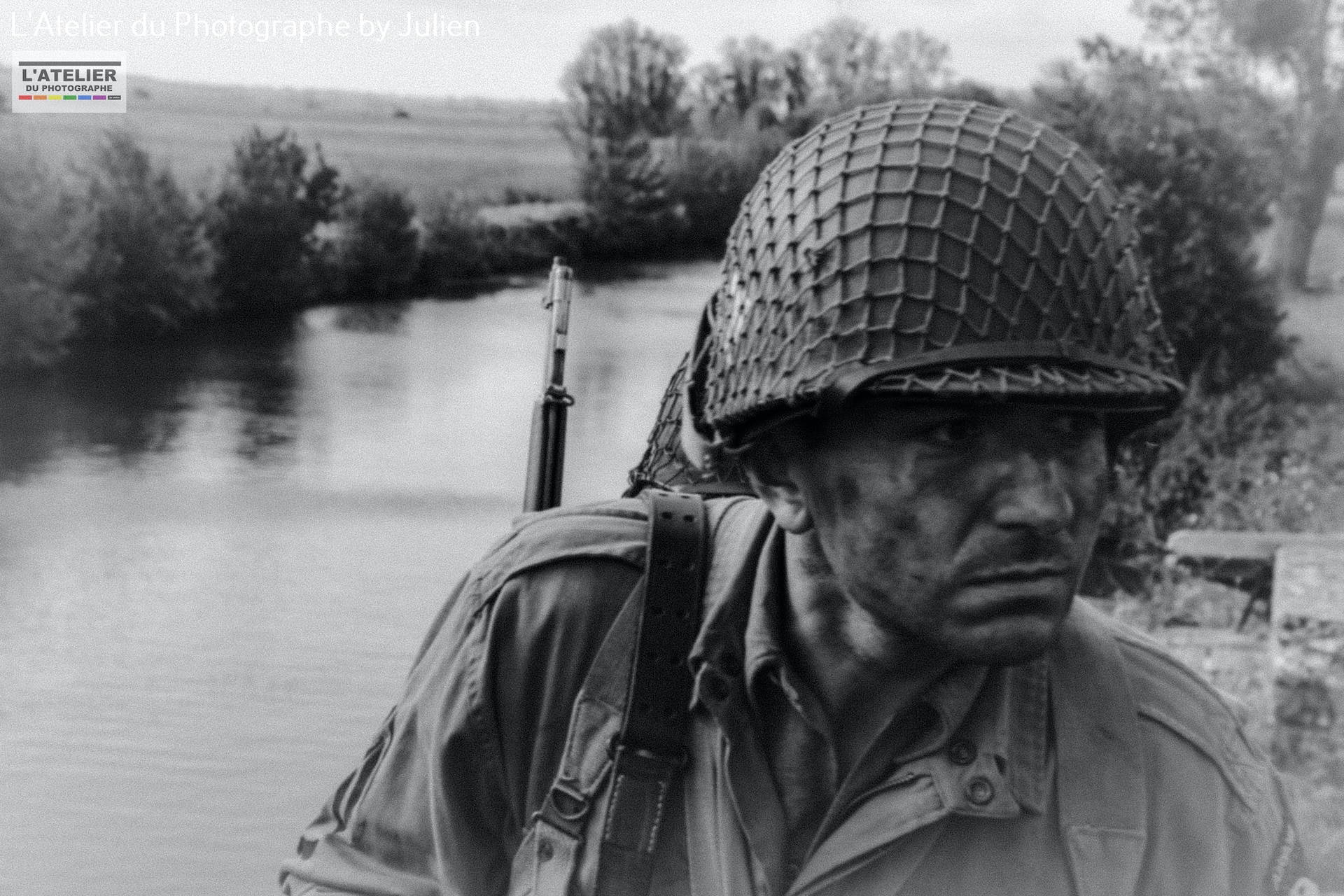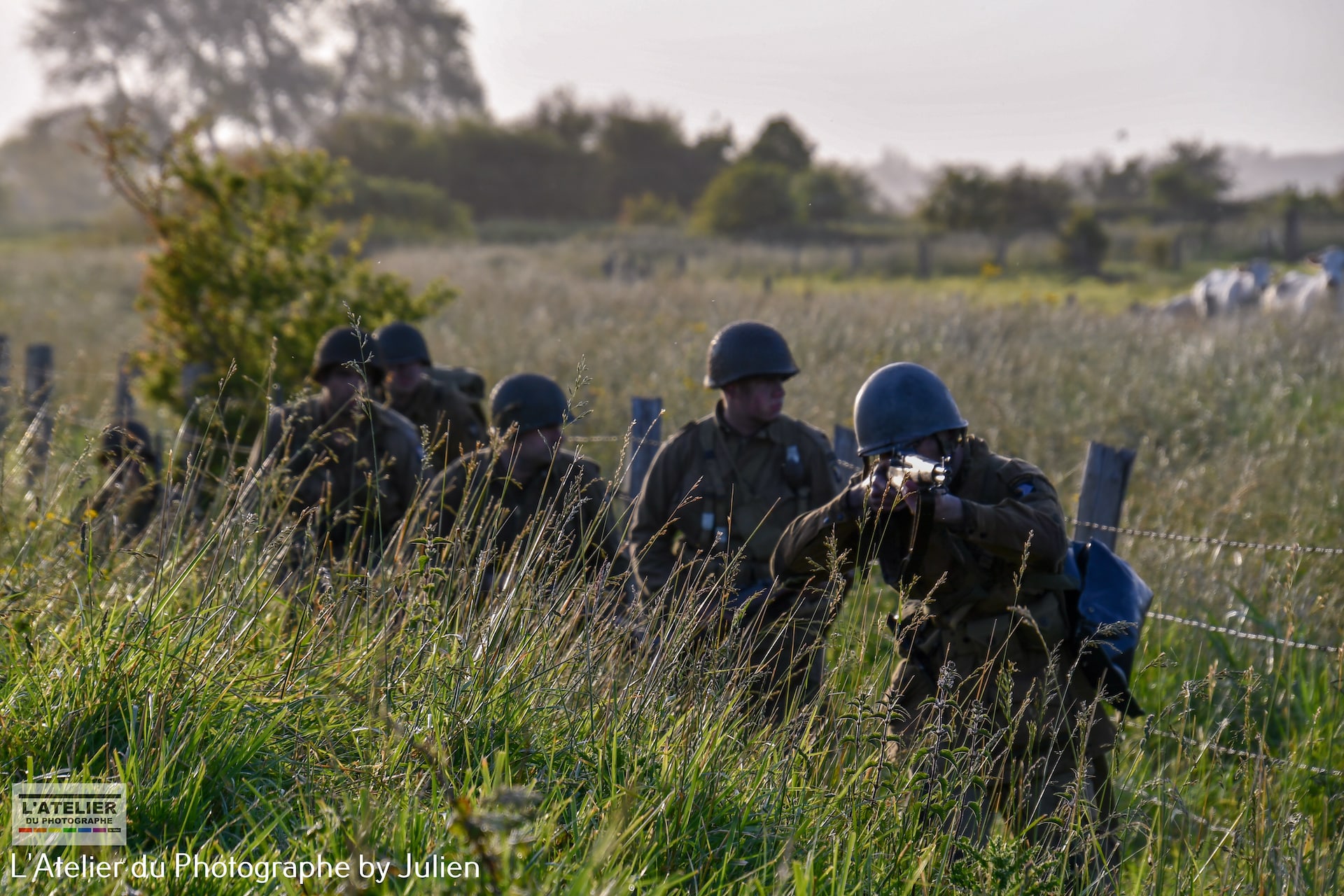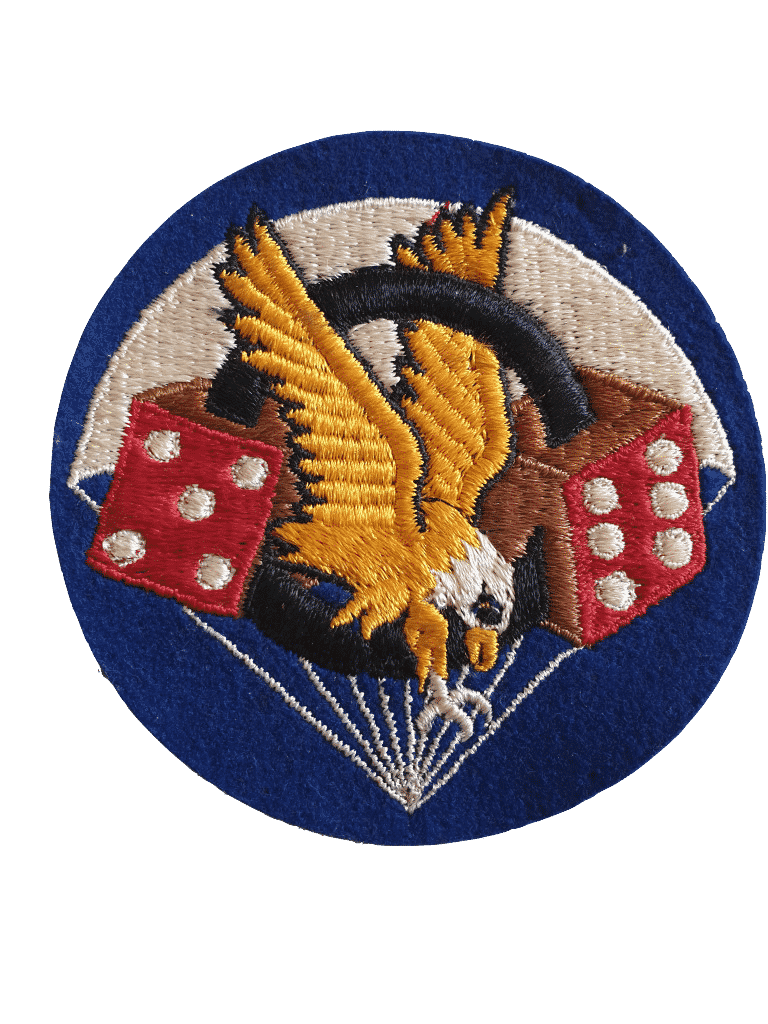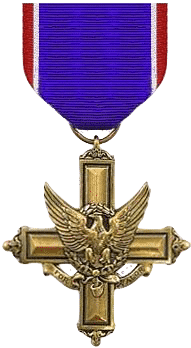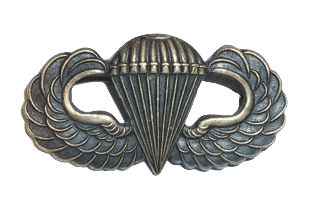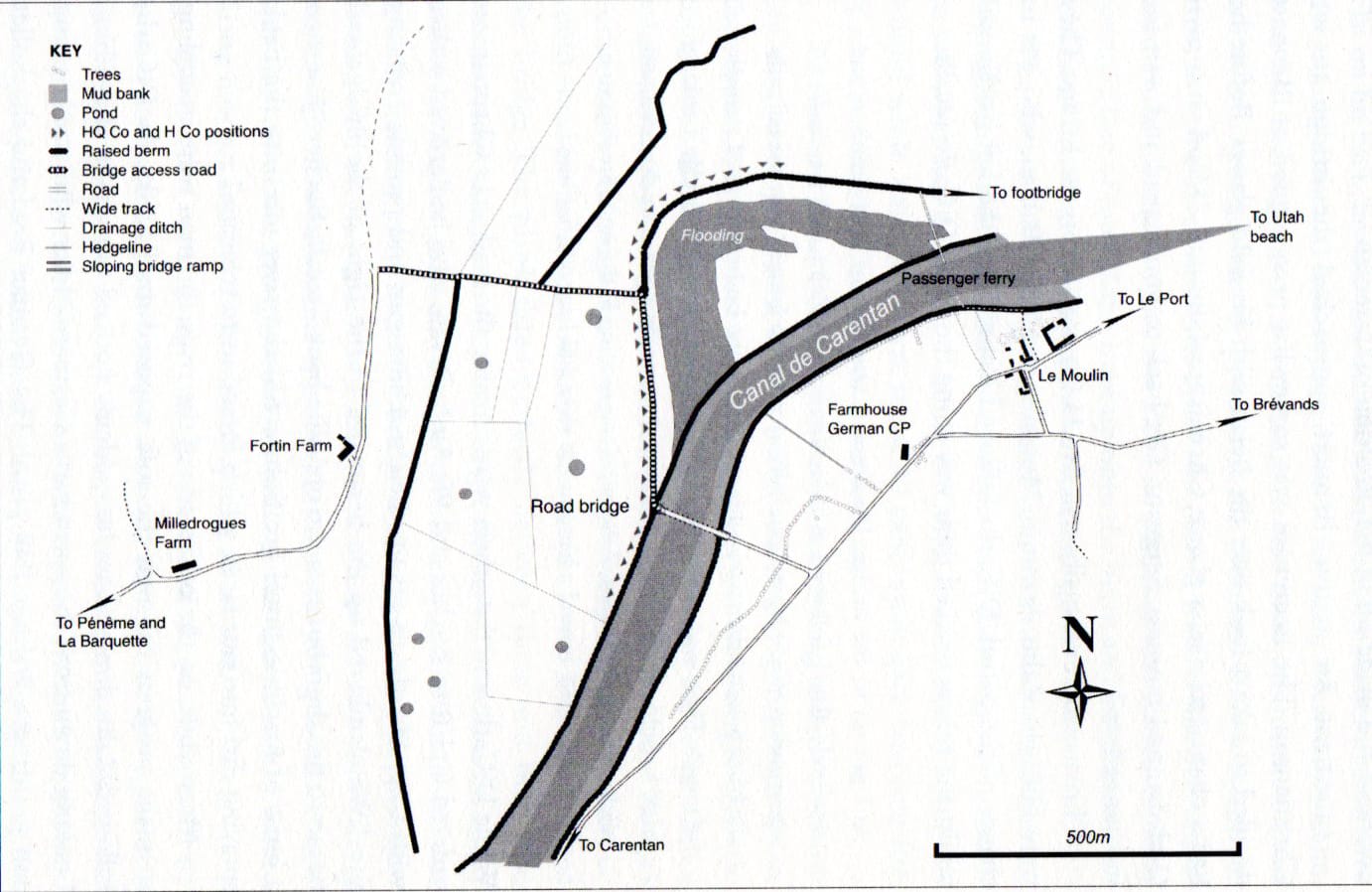 |
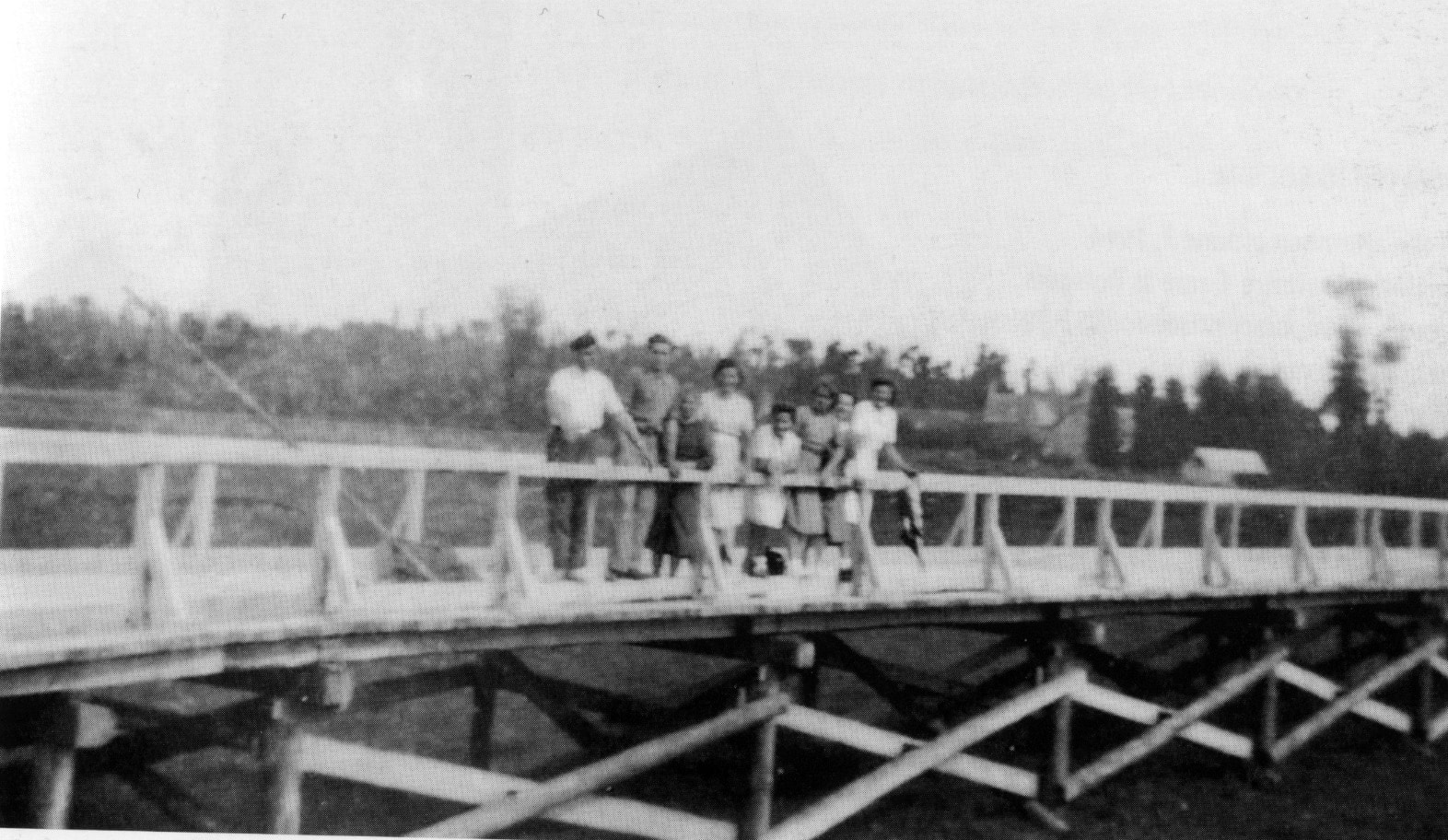 |
In the original plan, which had long been discussed in secret by the chiefs of staff, 3rd Battalion 506th and the first and second Battalion of the 501st PIR were due to be dropped in Drop Zone D, to the south of Vierville and east of Angoville au Plain. This drop zone offered aa large clear area around half a mile wide and over a mile across, with a canal cutting it in two in the marshy ground around the little village of Angoville. Most of the Drop Zone was supposed to be used as a reserve zone for any aircraft from the 101st that found itself in difficulty. The two battalions from the 501st PIR, which were seen as being extremely important to the commanders, fiery Colonel Howard R. Johnson, brought together in two serials, N° 14 and 15, (name used in the IX TCC – editor’s note) with 1475 men, who had to take care of the locks at La Barquette and two bridges on the N13 road to Carentan. These two serials took off from Merryfield just before the 3/506 in order to be dropped before Wolverton’s men.
The latter were targeting two wooden bridges over the Douve built by the Germans close to Le Port and a little ferry, which crossed the river at that point. The first of the two bridges, the closest to the sea at a place called Le Moulin, was a wooden footbridge built in late 1942 located 250m downstream of the ferry. The second objective was a road bridge that the Germans built between August and December 1943 in order to make it easier for vehicles to go between Calvados and the Cherbourg Peninsula, between the areas that the Allies would call Omaha and Utah Beach. This road bridge was located 750m upstream of the ferry towards Carentan close to the Fortin family’s farm.
A decimated battalion
Of the 575 officers and men in the 3/506, who jumped, 103 were killed, including the CO, Lieutenant Colonel Robert L. Wolverton, his XO George Grant, and Captain Harold Van Antwerp, Commander of G Company. 1st Lieutenant James D. Holstun, S-1 for the battalion died a little later on 6th June when he reached the Douve. 75 troopers were taken prisoner, including Captain Robert Harwick, Commander of H company and Captain John McKnight, Commander of I company, former assistant to Wolverton at HQ 3/506. Captain Harwick would manage to escape and took command of the battalion on 9th June. Incidentally, Harwick would once again take over a battalion replacing the CO killed in action on 18th December in Noville near Bastogne. He took command of 1/506 after the death of Lt Col. James Laprade.
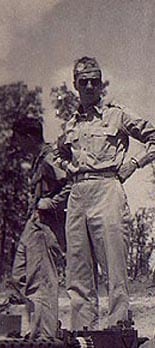
At dawn on 6th June, Captain Charles Gordon Shettle (S-3 with the battalion) was walking towards les Droueries and came across two officers and 12 men. He decided to head towards what was the objective for his battalion, the bridges at Brévands over the Douve. He picked up 16 men along the way and two more officers. One of them was a lad from C/326th AEB with a mohawk haircut, which triggered an explosion (C2) in an electric sub-station. Around twenty men joined Shettle and so it was with around 60 troopers that he reached the road bridge at Brévands. Their arrival caused several Germans to flee and take refuge on the right bank of the Douve. A sniper shot 1st Lt Turner Chambliss in the throat. Because he was so tall he could be seen above the hedge alongside the river. 5 men crossed the Douve using the superstructure of the bridge. They destoyed three machine gun hide-outs before returning to the left bank. The bridge was mined to allow it to be destroyed. Shettle and his little group, which grew in size with the arrival of lost troopers, remained in position throughout the day and the following night. On 7th June, with no news of his 3rd battalion, Colonel Robert F. Sink, commander of the 506th PIR, thought that the bridges were still in enemy hands and ordered their destruction. Two American hunter-bombers attacked the bridges and destroyed them.
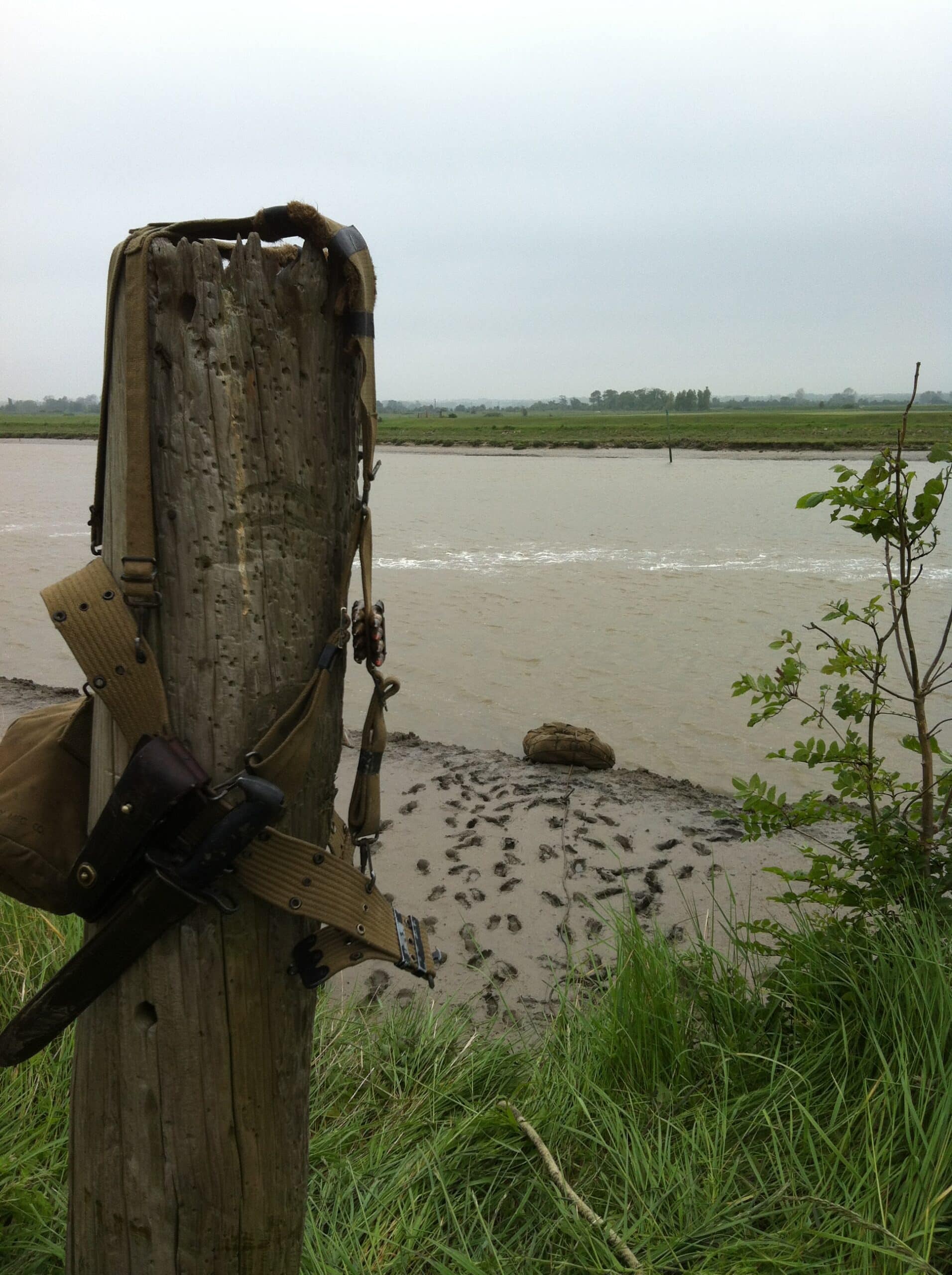 |
 |
Four P-47 Thunderbolts attacked the road bridge and dropped 500 pound bombs hitting it in the middle and at the two extremities, putting it out of use. Then three P-51B Mustangs came down from the north making the foot bridge impassable. From 6th to 8th June, the small numbers in the 3/506 PIR, 117 men and 19 officers, pushed back all the German attacks, taking 258 prisoners and killing between 60 and 70. 3/506 PIR was replaced on the evening of 8th June by the 327th Glider Infantry. The mission was finally accomplished by just 150 men, whereas it had been planned for more than 700. During the battle for the bridges, 3/506th suffered 7 losses and 21 men were injured. For their courage and heroic behaviour at Brévands, 4 men from the battalion received the Distinguished Service Cross (D.S.C.): Lieutenant Charles Santasiero from 1 Company, Sergeant George Montilio from H company, Pfc Donald Zahn from H company and Pfc Andrew Sosnak from the medical detachment.
 In Normandy, Sgt. Harry A. Clawson would be awarded the Silver Star for his actions. But Harry was equally interested in collecting German medals, that he took from fallen German soldiers, and pinned inside his combat jacket. His friend Fred Bahlau warned him that if the Germans ever caught him with these medals, he would be dead. Unfortunately, Harry saw no danger. But on October 5 1944, while Harry was observing for the mortars on the second floor of a house near the railroad station in Opheusden, he was blinded by German fire and captured when his company fell back. When the Germans wanted to take care of his wounds, they discovered the German medals inside his jacket. He was taken outside and executed. He was buried in an unmarked grave, next to Morris Thomas and would be MIA up until 1971. His name, and Thomas’, is still on the Wall of Missing with a star added, meaning that his remains were found and identified.
In Normandy, Sgt. Harry A. Clawson would be awarded the Silver Star for his actions. But Harry was equally interested in collecting German medals, that he took from fallen German soldiers, and pinned inside his combat jacket. His friend Fred Bahlau warned him that if the Germans ever caught him with these medals, he would be dead. Unfortunately, Harry saw no danger. But on October 5 1944, while Harry was observing for the mortars on the second floor of a house near the railroad station in Opheusden, he was blinded by German fire and captured when his company fell back. When the Germans wanted to take care of his wounds, they discovered the German medals inside his jacket. He was taken outside and executed. He was buried in an unmarked grave, next to Morris Thomas and would be MIA up until 1971. His name, and Thomas’, is still on the Wall of Missing with a star added, meaning that his remains were found and identified.
Donald Eugene Zahn, H Company, 506th Parachute Infantry, 101st Airborne

Along with a small group of paratroopers from Co. H of the 506th regiment, 101st Airborne, Zahn played an important role in one of the mission goals: the capture of two small bridges over the Douve River. He was the first to volunteer as a scout and the first to cross the bridge, but George Montillo, a sergeant from Zahn’s company, would be the first to earn credit for the operation. The military awarded Montillo its second highest valor award: the Distinguished Service Cross.
Zahn finally received a Distinguished Service Cross of his own after tireless advocacy by his company commander Cpt. Robert Harwick. He received the honor at Berchtesgaden on May 9, 1945, the same week he took Hitler’s bathtub plug.
However, that isn’t Zahn’s proudest wartime moment.
Zahn said that before boarding the planes to jump on D-day, paratroopers received verbal orders to take no prisoners for three days after the invasion. Within that timeframe, skirmishes along the Douve River and surrenders after the fighting yielded 25 disarmed German soldiers. Zahn and his comrades discussed the best course of action. However, Charles Shettle, a captain from 3rd Battalion S-3, had the final word as the ranking officer, according to Bando.
“Well, we have orders not to keep any prisoners,” he told the men. “Zahn, take these guys and get rid of them.”
The thought of killing prisoners immediately repulsed Zahn. After some quick thinking, he spotted his friend Whitey Hoffman, a soldier fluent in German, and told Shettle they could extract valuable intelligence from the soldiers. Zahn’s idea swayed Shettle.
Zahn and Hoffman guided their prisoners to a barn over about a mile of pastureland under intermittent mortar fire from across the river. After reaching the barn, Zahn and Hoffman ordered them inside. Initially, the prisoners were angry until Hoffman explained their lives were on the line. That reality secured their cooperation.
That moment, a story of human kindness and dignity set against the inhumanity of war, was Zahn’s finest hour.
“I’m really proud of the fact that I managed to save that many lives,” he said.
Don was a Pfc when he earned the medal with H/506, and he later got a Battlefield Commission, ending the war as a 1st Lt in 2nd plt C/506th. His platoon was assigned the mission of guarding the Berghof, Hitler’s mountain home at Berchtesgaden, in May, 1945.
Frederick Bahlau, H/506th Parachute Infantry, 101st Airborne, two Silver Stars
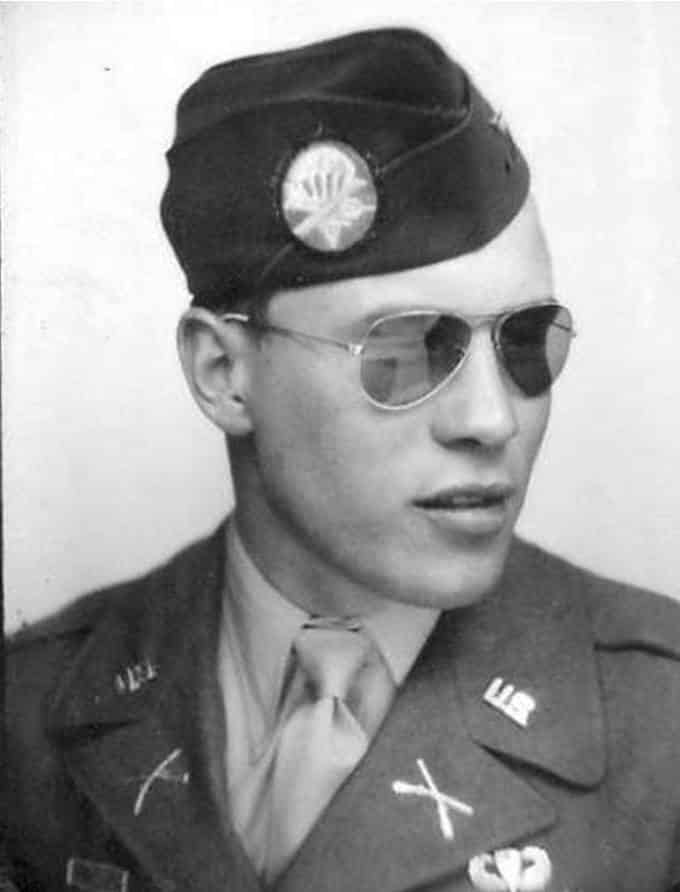 Fred was one of the major heroes in the liberation of Carentan. Supply Sergeant with Company H of the 506th parachute regiment attached to the 101st Airborne, his actions at the bridges at Brévands on 7th June 1944 saw him awarded the greatest distinction for the American army, the Silver Star. On 20th June 1944, General Troy Middleton, commander of the American VIIIth Corps gave him his medal at one of the three famous ceremonies held on the Place de la République in Carentan. Fred Bahlau was born on 30th August 1923 in Jackson, Michigan. Of German origin, his grandfather had been a soldier in the Imperial Army before the First World War. As soon as Pearl Harbor was attacked, he tried to sign up, but was not yet 18 and his parents refused to sign a waiver. He waited until his nineteenth birthday before signing up in Detroit on 23rd September 1942. A recruiting officer helped him fill in his application to convince his mother that he was only signing up to train as an electrician. He arrived at Fort Benning and volunteered for the paratroops. He quickly became corporal, then Staff Sergeant in the Service Company in the 506th PIR, assigned to Company H. He was Supply Sergeant in Company H, when he jumped over Normandy on the night of 6th June 1944. The work required a lot of cunning and resourcefulness and Bahlau was known for his ability to get his hands on whatever his Company needed by any means possible. He landed on the wrong side of the Douve, towards Brévands, but managed to rejoin the surviving men from the 3rd battalion, which was decimated on the Drop Zone to the south of Angoville au Plain. He placed himself under the command of Captain Charles Shettle, S-3 (Plans and Operations) of the battalion. Shettle ordered him to take 5 or 6 men across the Douve again, using one of the two bridges built by the Germans, in order to test the German defenses to the south of the Douve, and to attempt to set up a bridgehead there if possible. In the company of Don Zahn, Hank Di Carlo, George Montilio and Sergeant Harry Clawson, he crossed the Douve at the level of the road bridge upstream from Brévands and immediately came under German machine gun fire. Fred was the fourth man to try to cross the bridge under enemy fire. Hank Di Carlo was hit in the chest. Fred tried to kill the German who had fired, but his Thompson machine gun which was full of sand, jammed. It was Don Zahn, who killed the German. Fred dragged Di Carlo into the shelter of the parapet and gave him first aid. He then headed for the right bank of the Douve, which he inspected for 500 yards or so. His presence along with that of his fellow soldiers blocked a German counter-attack to try to grab the two bridges near Brévands, the footbridge and road bridge. Fred returned four hours later and brought Di Carlo back towards the American lines and the infirmary set up at the Fortin Farm in Pénême. His feats at the bridges at Brévands on 7th June were honored when he was awarded his first Silver Star. On 13th June, during the terrible battle at Bloody Gulch to the south of Carentan, facing a counter-attack from the 17th Panzer Division SS, he was appointed First Sergeant of H/506th, when Sergeant Gordon Bolles was seriously injured. In a U.S. infantry company, the First Sergeant is part of the relay between the rank and file troopers and the officers. When the latter came out of hospital in England in July, H Company found itself with two First Sergeants. Fred was therefore transferred to HQ Company in the 3/506th as their new First Sergeant. He would keep this role in Holland and at Bastogne. It was near Opheusden on 5th October 1944 that Fred got his second Silver Star, when he went under enemy fire to recover some important documents left by Major Harwick in a jeep by the Linge Canal after an ambush. After Bastogne, Fred received a Battlefield Commission, a promotion obtained on the battlefield and was made 2nd Lieutenant. A month later, he became First Lieutenant. He returned to Onsted, Michigan at the end of the war, married his high school sweetheart and took over his father’s electrical firm. He became President of the Irish Hills Tourist Association and created the Electric Maintenance and Repair Company in Jackson, Michigan. Frederick A. Bahlau died on Tuesday 21st October 2014 at the age of 91 in Toledo, Ohio.
Fred was one of the major heroes in the liberation of Carentan. Supply Sergeant with Company H of the 506th parachute regiment attached to the 101st Airborne, his actions at the bridges at Brévands on 7th June 1944 saw him awarded the greatest distinction for the American army, the Silver Star. On 20th June 1944, General Troy Middleton, commander of the American VIIIth Corps gave him his medal at one of the three famous ceremonies held on the Place de la République in Carentan. Fred Bahlau was born on 30th August 1923 in Jackson, Michigan. Of German origin, his grandfather had been a soldier in the Imperial Army before the First World War. As soon as Pearl Harbor was attacked, he tried to sign up, but was not yet 18 and his parents refused to sign a waiver. He waited until his nineteenth birthday before signing up in Detroit on 23rd September 1942. A recruiting officer helped him fill in his application to convince his mother that he was only signing up to train as an electrician. He arrived at Fort Benning and volunteered for the paratroops. He quickly became corporal, then Staff Sergeant in the Service Company in the 506th PIR, assigned to Company H. He was Supply Sergeant in Company H, when he jumped over Normandy on the night of 6th June 1944. The work required a lot of cunning and resourcefulness and Bahlau was known for his ability to get his hands on whatever his Company needed by any means possible. He landed on the wrong side of the Douve, towards Brévands, but managed to rejoin the surviving men from the 3rd battalion, which was decimated on the Drop Zone to the south of Angoville au Plain. He placed himself under the command of Captain Charles Shettle, S-3 (Plans and Operations) of the battalion. Shettle ordered him to take 5 or 6 men across the Douve again, using one of the two bridges built by the Germans, in order to test the German defenses to the south of the Douve, and to attempt to set up a bridgehead there if possible. In the company of Don Zahn, Hank Di Carlo, George Montilio and Sergeant Harry Clawson, he crossed the Douve at the level of the road bridge upstream from Brévands and immediately came under German machine gun fire. Fred was the fourth man to try to cross the bridge under enemy fire. Hank Di Carlo was hit in the chest. Fred tried to kill the German who had fired, but his Thompson machine gun which was full of sand, jammed. It was Don Zahn, who killed the German. Fred dragged Di Carlo into the shelter of the parapet and gave him first aid. He then headed for the right bank of the Douve, which he inspected for 500 yards or so. His presence along with that of his fellow soldiers blocked a German counter-attack to try to grab the two bridges near Brévands, the footbridge and road bridge. Fred returned four hours later and brought Di Carlo back towards the American lines and the infirmary set up at the Fortin Farm in Pénême. His feats at the bridges at Brévands on 7th June were honored when he was awarded his first Silver Star. On 13th June, during the terrible battle at Bloody Gulch to the south of Carentan, facing a counter-attack from the 17th Panzer Division SS, he was appointed First Sergeant of H/506th, when Sergeant Gordon Bolles was seriously injured. In a U.S. infantry company, the First Sergeant is part of the relay between the rank and file troopers and the officers. When the latter came out of hospital in England in July, H Company found itself with two First Sergeants. Fred was therefore transferred to HQ Company in the 3/506th as their new First Sergeant. He would keep this role in Holland and at Bastogne. It was near Opheusden on 5th October 1944 that Fred got his second Silver Star, when he went under enemy fire to recover some important documents left by Major Harwick in a jeep by the Linge Canal after an ambush. After Bastogne, Fred received a Battlefield Commission, a promotion obtained on the battlefield and was made 2nd Lieutenant. A month later, he became First Lieutenant. He returned to Onsted, Michigan at the end of the war, married his high school sweetheart and took over his father’s electrical firm. He became President of the Irish Hills Tourist Association and created the Electric Maintenance and Repair Company in Jackson, Michigan. Frederick A. Bahlau died on Tuesday 21st October 2014 at the age of 91 in Toledo, Ohio.

